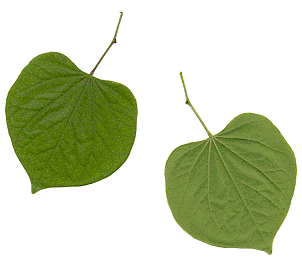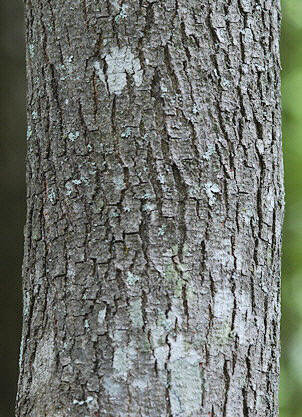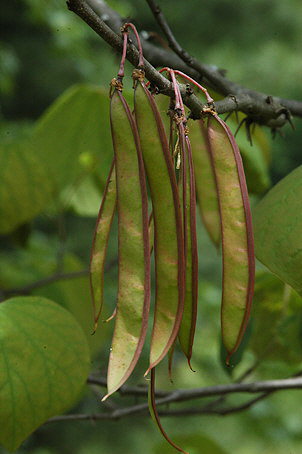| |
|
| |
 |
| |
Eastern Redbud Leaf |
Identification:
The leaves are 3 inches to 5 inches in
length, and are simple,
alternate,
entire, smooth and heart-shaped.
Note the palmate venation in the leaves. The
petiole is swollen at both ends.
Note
the alternate branching on this tree.
| |
|
 |
|
|
Eastern Redbud Bark |
The bark of the Eastern Redbud is
gray-brown, thin and smooth in young trees, and becomes fissured and
scaly on old trees. On large trunks you may be able to see the
orange inner bark.
The twigs of the Eastern Redbud are
dark reddish purple to dark brown, smooth and shiny with dark
lenticels.
| |
|
| |
 |
| |
Eastern Redbud Fruit |
Look for the
fruit pods of the
Eastern Redbud in the summer months. Each pod is 2 inches to 3
inches long. The pods will have darkened to a deep brown or
black by the fall. The seeds are often eaten by birds.
Other Uses
and Lore:
The wood is heavy,
hard and close-grained. Because of its small size, the wood is
not used commercially.
The Trail From
Station Five to Station Six
From Station
Five, the trail climbs and then follows the western side of the
ridge. The many limestone outcrops are heavily fissured with
both horizontal and vertical fissures. These fissures provide
shelter for a wide variety of animals. One of the most
colorful of these is the Cave Salamander.
These salamanders can sometimes be seen in the larger fissures of
the outcrops on warm days.
|

